July 15, 2024
Review RecipeVanilla Buttermilk Cake
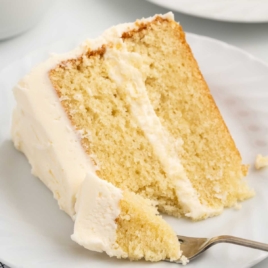
Table of Contents
- Vanilla Buttermilk Cake Ingredients
- Substitutions And Additions for Buttermilk Vanilla Cake
- How To Make This Vanilla Buttermilk Cake Recipe
- Troubleshooting
- How To Serve
- How to Store Leftover Vanilla Cake With Buttermilk
- Why This Vanilla Buttermilk Cake Is The Best
- Frequently Asked Questions
- New Recipes You’ll Love
- JUMP TO RECIPE
- Even More Recipes You’ll Love
If you’ve already tried our Vanilla Buttermilk Cake, you know it’s a delicately sweet cake with a moist and tender crumb, topped with a simple buttercream frosting. We adore this cake for it’s versatility — it’s perfect for every event, from baby showers and birthday parties — and our readers do, too! You can’t go wrong with a classic recipe like this one, and now, it’s even easier to make at home.
At Spaceships and Laser Beams, our goal is to create recipes that are easy to follow in your home kitchen. This includes providing you with clear instructions, plenty of photos to guide you, and expert advice from our talented recipe development team.
There are thousands of recipes for Vanilla Buttermilk Cake on the internet, and most use similar ingredients. But what makes or breaks a recipe for cake recipes that use buttermilk is the ratio of ingredients and the recipe specifics, like what order to incorporate the ingredients and how long to bake the cake. We’re confident we’ve perfected this vanilla cake recipe, and we’re going to share all our tips and tricks along the way so you can bake the perfect cake, too!
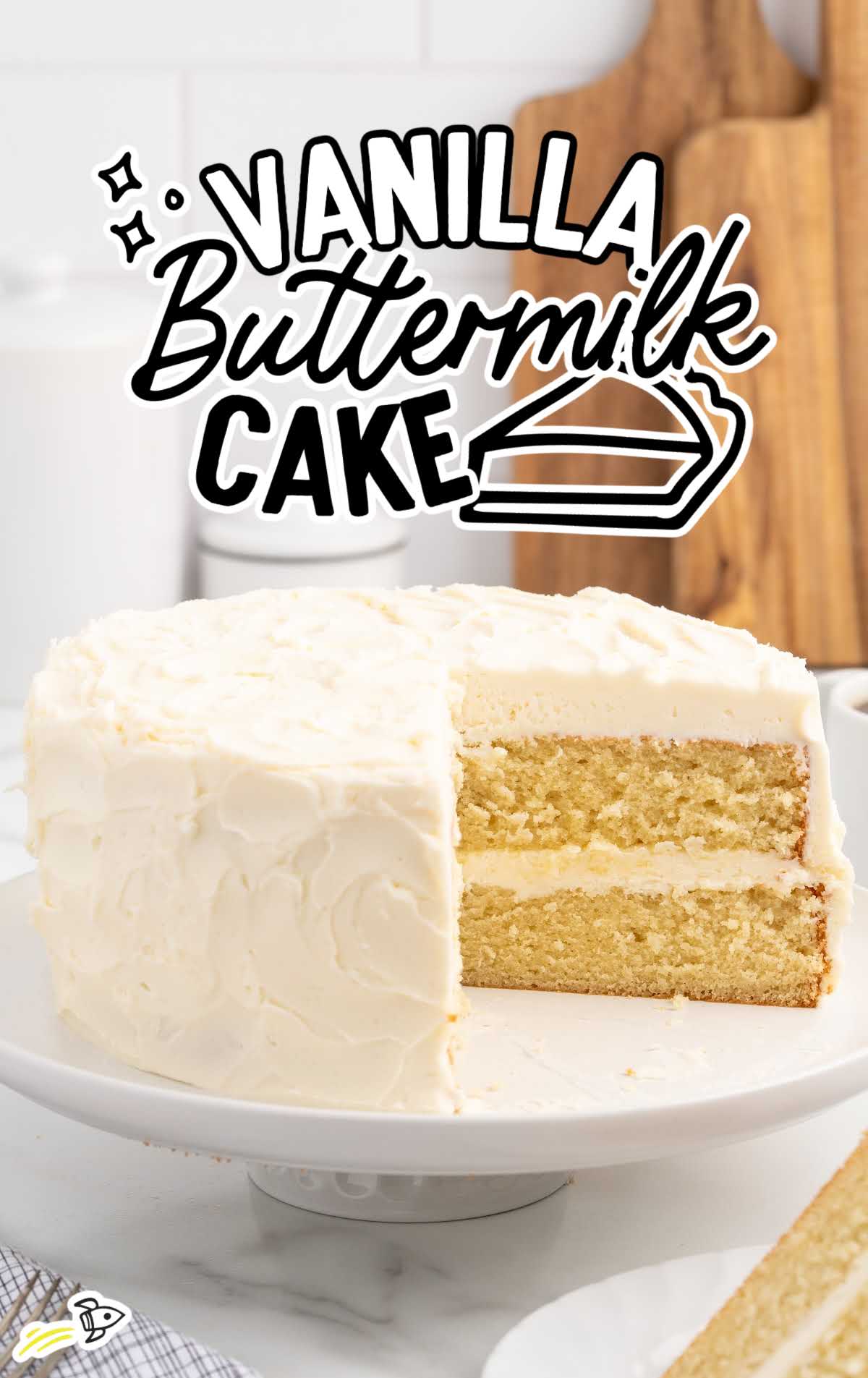
Vanilla Buttermilk Cake Ingredients
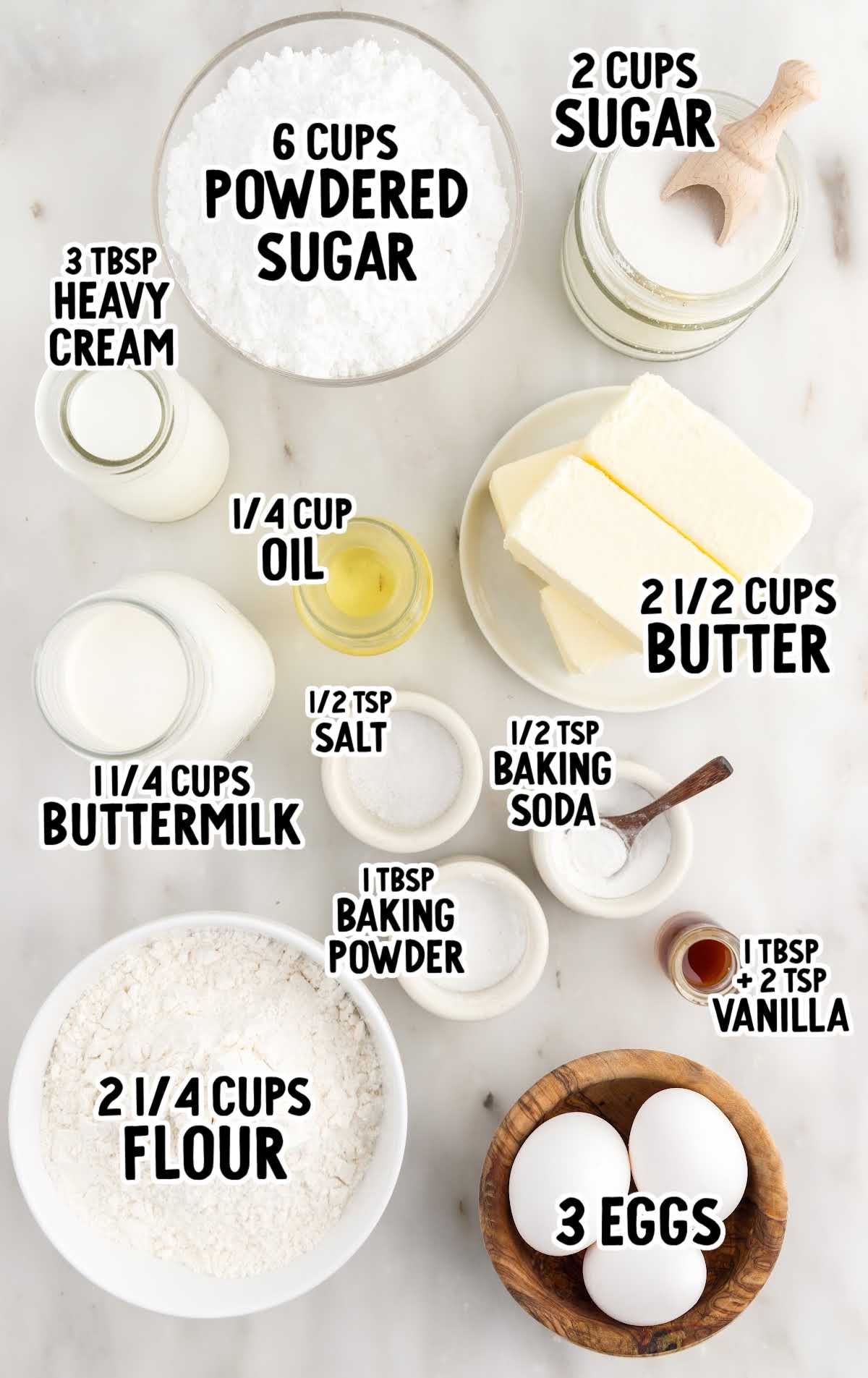
There’s a certain magic that happens when simple ingredients come together in just the right way.
Vanilla extract shines in this recipe, providing our layer cake with its signature flavor, while the buttermilk adds a subtle tanginess and ensures a moist crumb.
You’ll Need:
For The Cake:
- 2¼ cups of all-purpose flour
- 1 tablespoon of baking powder
- ½ teaspoon of salt
- ½ teaspoon of baking soda
- 1 cup of unsalted butter, softened
- 2 cups of granulated sugar
- ¼ cup of vegetable oil
- 1 tablespoon of vanilla extract
- 3 large eggs, room temperature
- 1¼ cups of buttermilk, room temperature
For The Frosting:
- 1½ cups of unsalted butter, softened
- 6 cups of powdered sugar
- 2 teaspoons of vanilla extract
- 3 tablespoons of heavy cream or whole milk
Substitutions And Additions for Buttermilk Vanilla Cake
Vanilla cake with buttermilk is so delicious, and this recipe tastes really yummy using the ingredients as directed. However, if you need to substitute ingredients for dietary requirements or ingredient availability, here are some suggestions:
All-Purpose Flour: You can substitute with equal parts cake flour for a lighter crumb. For a gluten-free option, use a high-quality gluten-free flour.
Unsalted Butter: If you only have salted butter on hand, you can use it, but reduce the additional salt in the recipe by half.
Granulated Sugar: You can replace half of the granulated sugar with light brown sugar for a deeper flavor.
Vegetable Oil: Canola or sunflower oil can be used instead of vegetable oil.
Vanilla Extract: Try using almond extract or a mix of vanilla and almond in this easy recipe for a different flavor profile.Buttermilk: You can make your own buttermilk by adding one tablespoon of lemon juice or white vinegar to one cup of whole milk and letting it sit for ten minutes.
How To Make This Vanilla Buttermilk Cake Recipe
Baking a cake from scratch might seem daunting, but this moist white cake recipe is surprisingly straightforward. However, there are some tips that ensure it’s the tastiest vanilla cake you’ve ever baked.
Let’s walk through the process together.
PRO TIP: Make sure your butter, eggs, and buttermilk are at room temperature so that they incorporate into the batter fully.
STEP ONE: Preheat the oven to 350°F. Spray two 8-inch round cake pans with non-stick baking spray. Line the bottoms of the pans with parchment paper and set aside.
PRO TIP: You can also bake the cakes in 9-inch round pans. Just decrease the bake time by about 5 minutes.
STEP TWO: Combine flour, baking powder, salt, and baking soda in a medium bowl and set aside.
STEP THREE: In a large mixing bowl, cream together the butter and granulated sugar with an electric mixer until pale and fluffy.
STEP FOUR: Add the vegetable oil and vanilla extract and beat one minute longer until creamy.
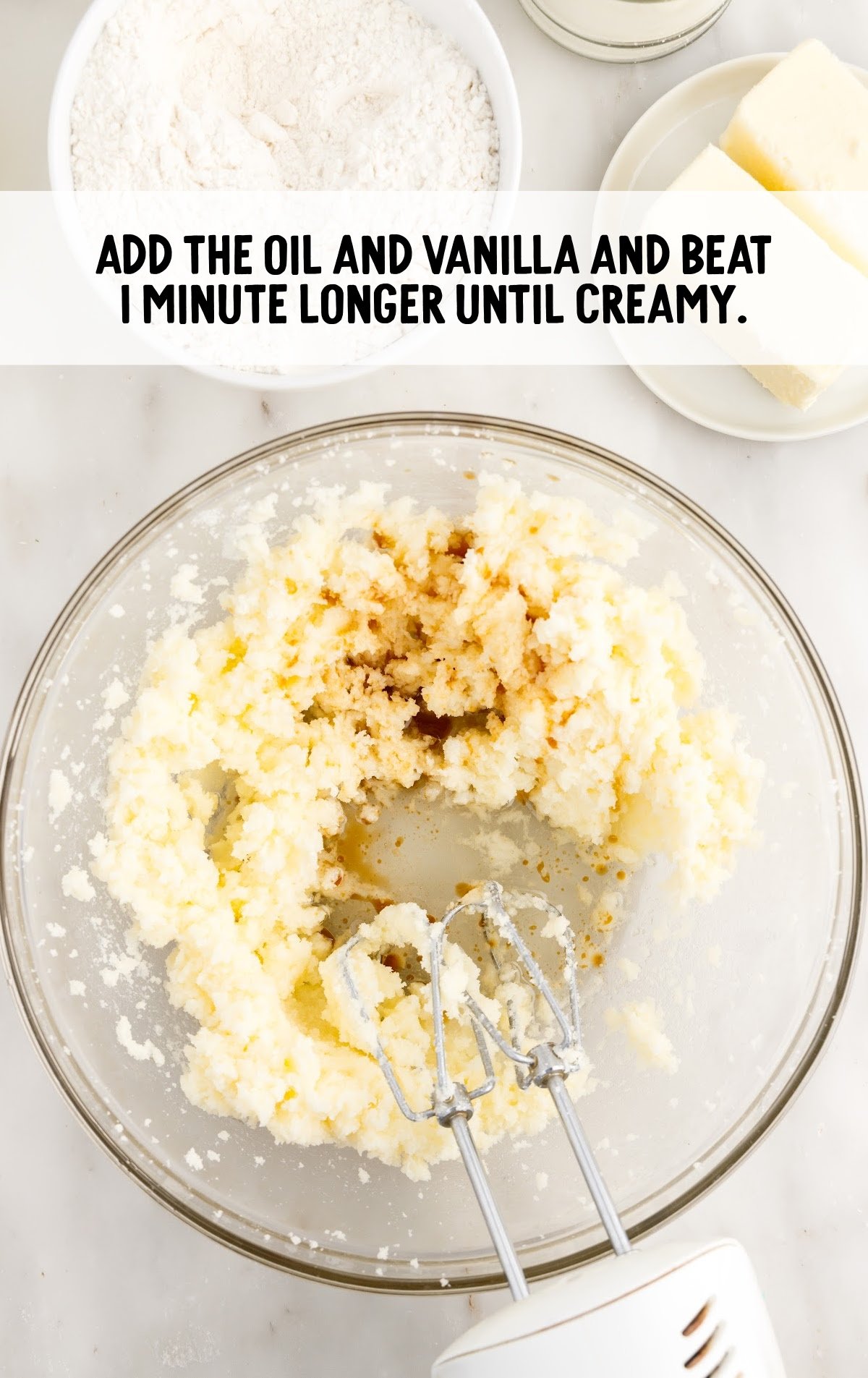
STEP FIVE: Beat in one egg at a time until the mixture is fluffy and fully combined.
STEP SIX: Rotate between adding the buttermilk and the flour mixture until the cake batter is combined.
PRO TIP: The mixing time is critical to this recipe coming out perfectly. Take your time and mix until everything is well incorporated. Use a spatula to scrape down the bowl if necessary.
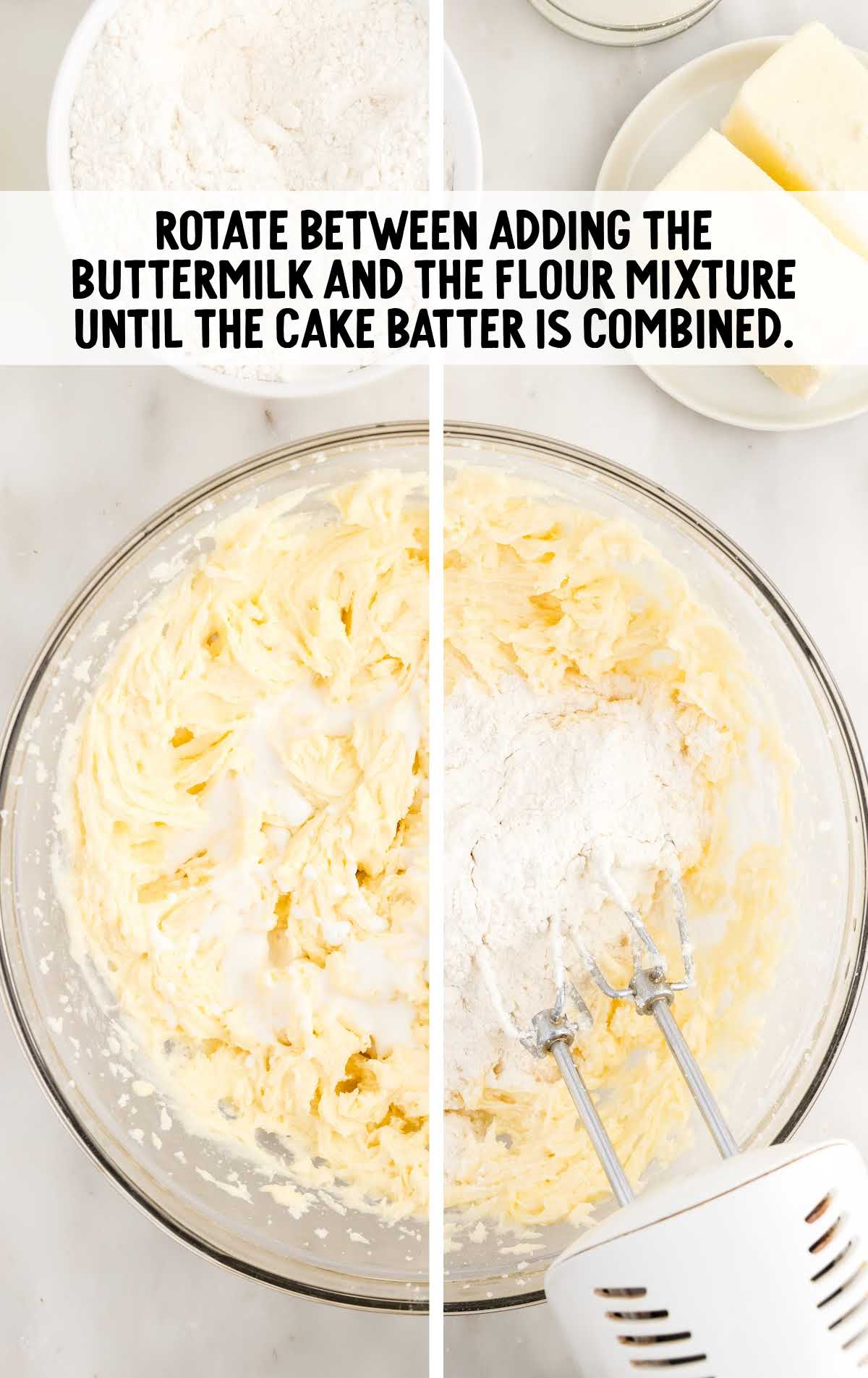
STEP SEVEN: Divide batter between the two prepared cake pans. Bake in your preheated oven for 30 to 35 minutes, until a wooden pick inserted in the cakes comes out with a few crumbs.
PRO TIP: Oven temperatures vary and may need to be recalibrated periodically to ensure they are accurate. Make sure to check your cake at the lower end of the recommended baking time.
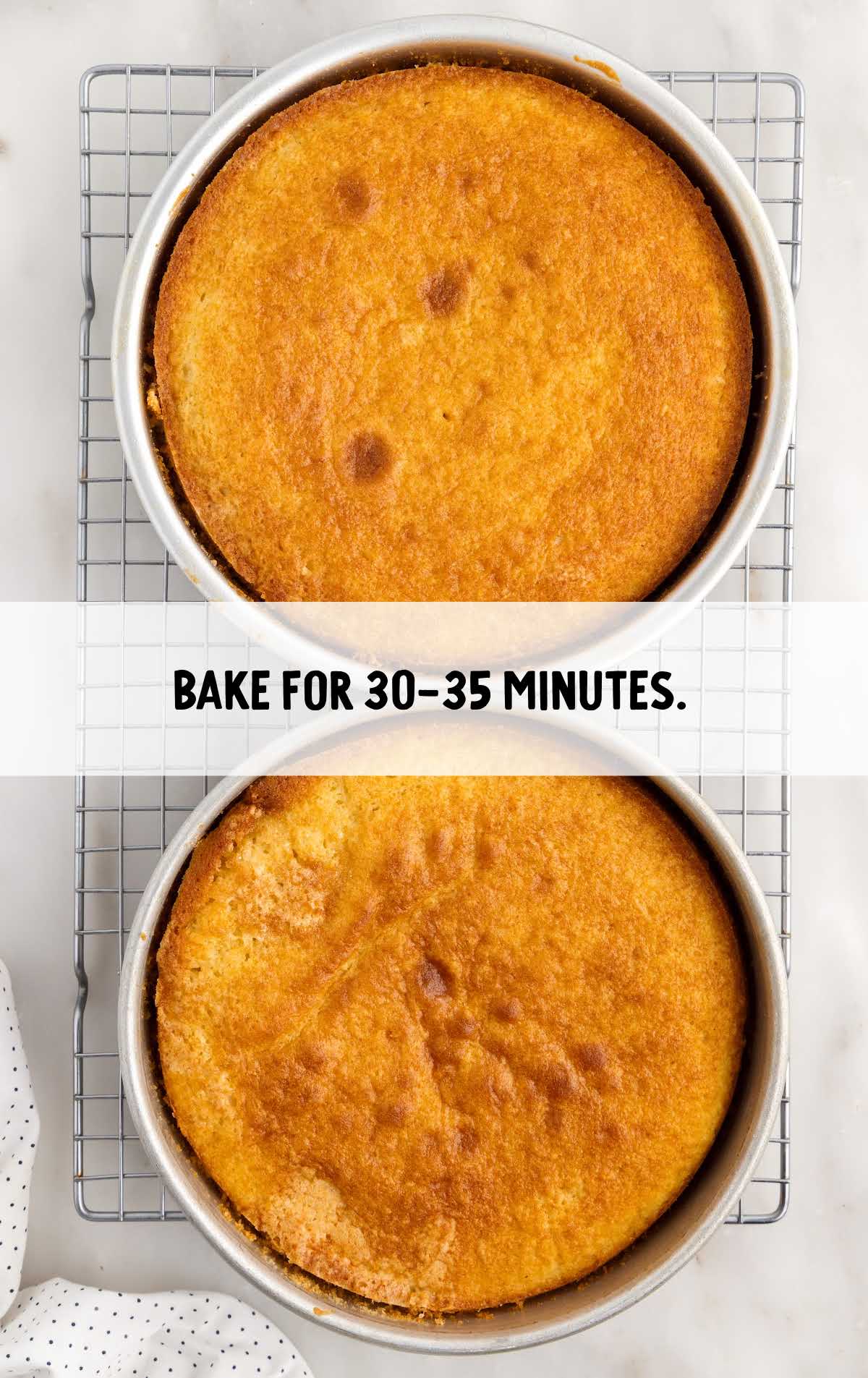
STEP EIGHT: Cool cakes on wire racks for 30 minutes, then carefully remove from the pan and cool completely.
PRO TIP: Cooling the cakes fully ensures that your frosting won’t melt when you apply it.
STEP NINE: To prepare the frosting, beat the softened butter with a hand mixer or stand mixer until fluffy and lightened in color, about two minutes.
STEP TEN: Add the powdered sugar, one cup at a time, mixing on low speed and gradually increasing to keep the powdered sugar in the bowl.
STEP ELEVEN: Add the vanilla extract and heavy cream and beat on high speed until light and fluffy, two minutes.
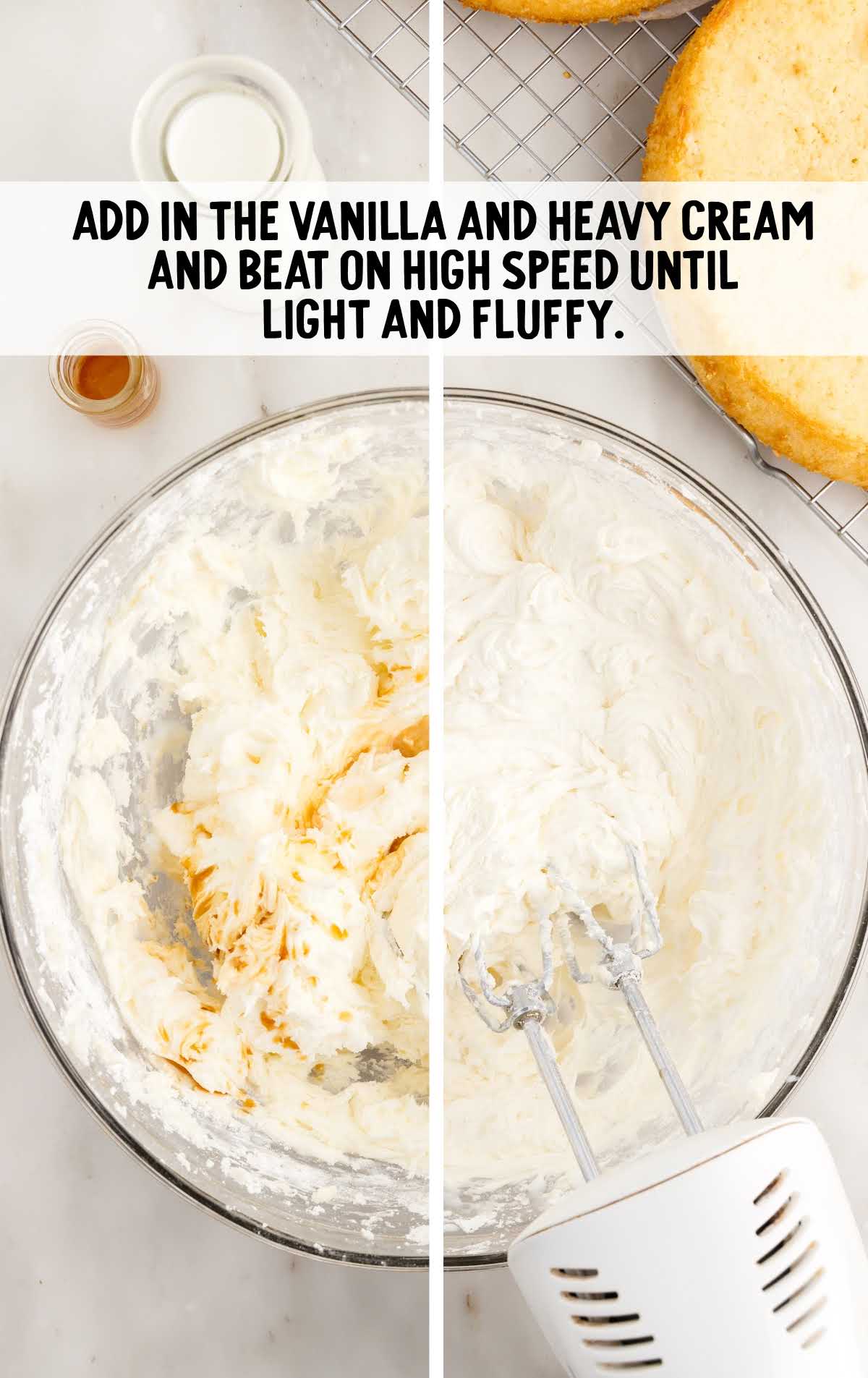
STEP TWELVE: Place the first layer of cake on a plate or cake stand. Spread a layer of frosting about a half-inch thick over the cake (about one cup of frosting).
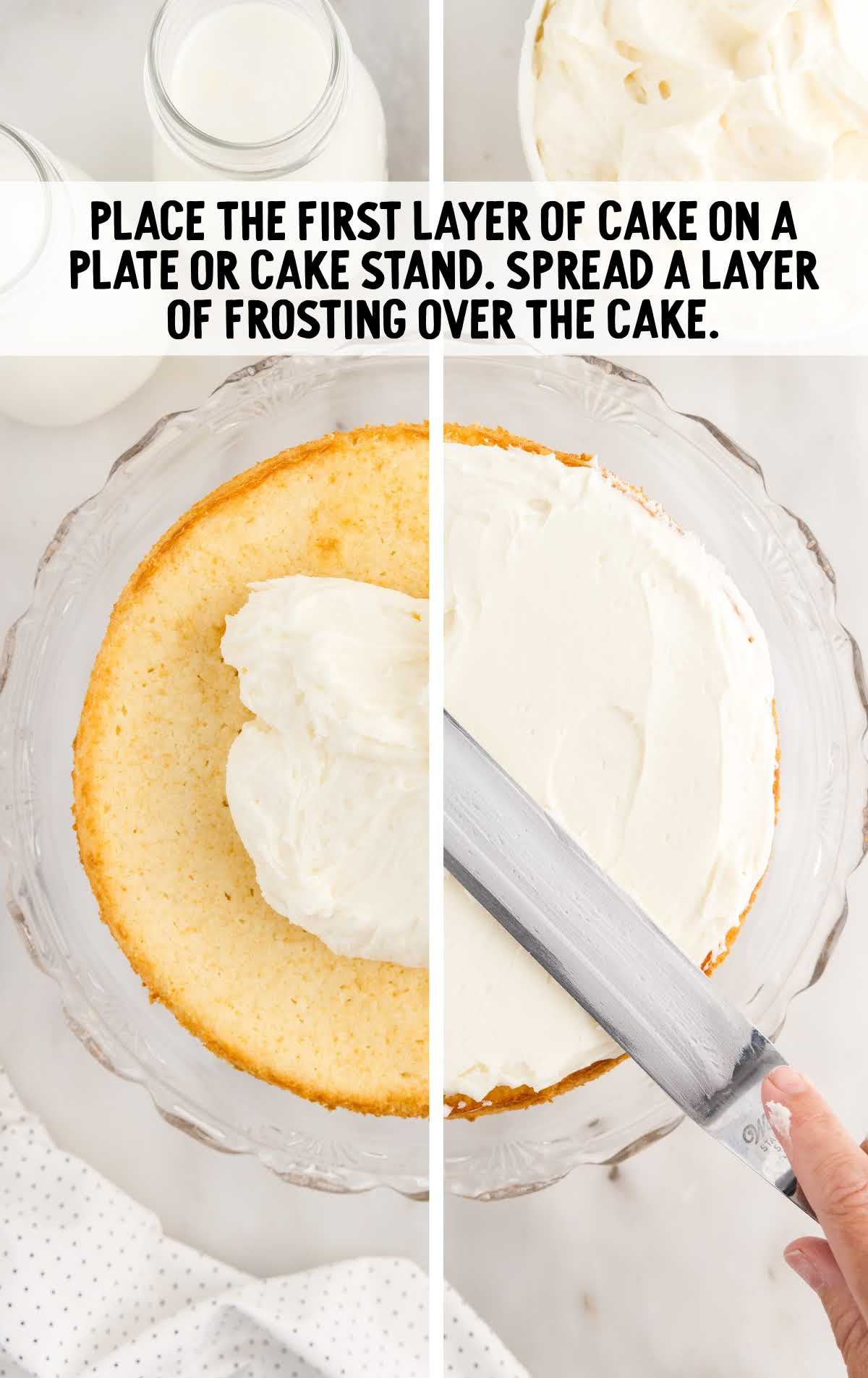
STEP THIRTEEN: Place the second layer of cake upside down on top of the first.
STEP FOURTEEN: Mound the remaining frosting on top of the cake and spread it across the top and down the sides, or decorate as you wish.
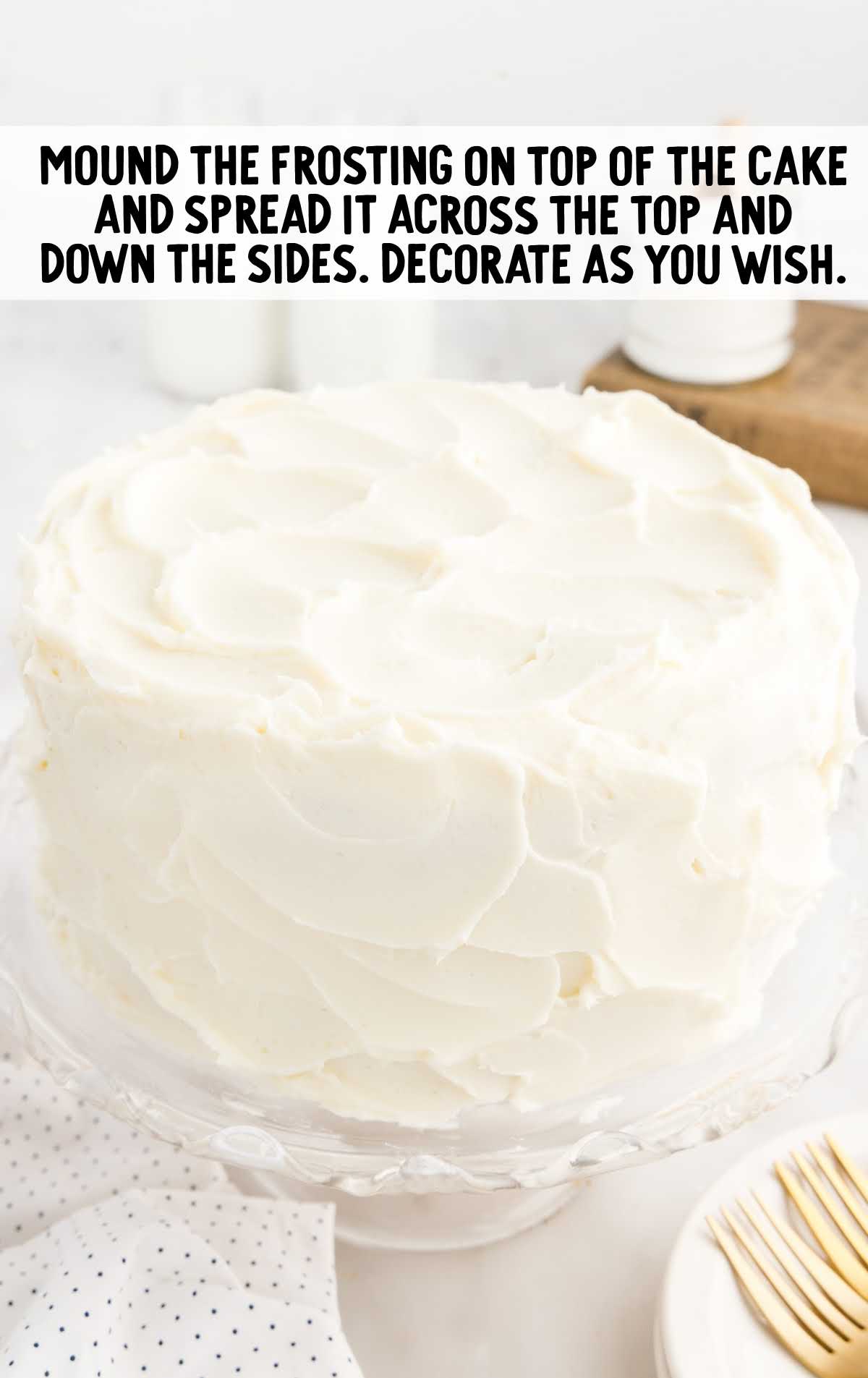
Troubleshooting
While this is a fairly straightforward vanilla cake recipe, there are some secret hints that take this cake from tasty vanilla cake to fabulously moist and delicious vanilla cake!
- Be positive your cold ingredients are at room temperature before you begin baking. It’s critical for how the batter comes together, but also, to ensure the cake goes into the oven at the right temperature.
- Your cake batter should be light and fluffy, and will likely have some bubbles in it. After you pour the batter into the cake pans, use a knife to ‘slice’ through the batter to pop some of the bubbles. You can also tap the pans on the counter to remove them, too. Remove as many as you can!
- It’s critical that you don’t overbake your cake. Keep a really close eye on it. All ovens are a bit different, so begin checking your cake at 28 minutes. Use the toothpick test (stick a fresh toothpick in the center of the cake, and as soon as it comes out clean, your cake is done) and check every two minutes.
- We’ve found that overbaking this cake tends to affect the texture and the taste. Make sure you stay close to your oven near the end of the bake time!
How To Serve
Vanilla buttermilk cake recipes are delicious, and so versatile.
Our best moist white cake recipe is a versatile dessert that can be dressed up or down, and is perfect for any special occasion.
For a casual, rustic presentation, simply dust the top of the cake with a little powdered sugar and serve with a dollop of whipped cream on the side.
If you want a more formal presentation, pipe the frosting onto the cake using a star tip, and garnish with fresh berries or edible flowers.
To add a fun twist, try serving slices of the cake with a scoop of vanilla ice cream. The cold, creamy ice cream perfectly contrasts with the warm cake.
To create an extra decadent dessert, drizzle slices of the cake with a homemade caramel sauce or hot fudge sauce.
Our strawberry cake and chocolate cake are two more classic recipes when you are craving the simple things in life.
Dress Up Your Buttermilk Vanilla Cake
- Add birthday sprinkles to the top while the buttercream is still fresh to make a simple and elegant birthday cake.
- Add a touch of food coloring to the buttercream to celebrate a special occasion: yellow for Easter, red for Christmas, or pink for Valentine’s Day.
- Add thinly sliced fresh fruit (like strawberries) between the layers for a pop of color and fruity flavor.
- Add a layer of lemon curd or jam between the layers for even more flavor.
Use a different flavor of frosting, like Oreo, Lemon Cream Cheese, or Blueberry Cream Cheese.
MORE CAKE RECIPES
How to Store Leftover Vanilla Cake With Buttermilk
Once you’ve enjoyed your vanilla buttermilk cake, you’ll want to store any leftovers properly to maintain their freshness.
MAKE AHEAD: This cake can be made a day ahead. Bake the cake layers, let the cake cool completely, then wrap them tightly in plastic wrap and store them at room temperature.
The frosting can also be made ahead and stored in the refrigerator.
When you’re ready to serve, let the frosting come to room temperature, then beat it briefly to restore its fluffy texture before frosting the cake.
IN THE FRIDGE: Store the frosted cake, covered, in the refrigerator for up to five days. The cold temperature will help to keep the frosting firm and the cake fresh.
IN THE FREEZER: If you want to store the cake for a longer period, you can freeze it, wrapped well in plastic wrap, for up to one month.
REHEATING: To serve the cake after freezing, let it thaw overnight in the refrigerator, then bring it to room temperature on the counter before serving.
If you’re in a hurry, individual slices can be microwaved for 10 to 15 seconds to take the chill off.
Why This Vanilla Buttermilk Cake Is The Best
Our vanilla buttermilk cake holds a special place in our hearts, and here’s why:
Simplicity: This great recipe uses simple, everyday ingredients, making it easy to whip up on a whim.
Flavor: The combination of classic vanilla and hint of tangy buttermilk creates a vanilla flavor that’s anything but ordinary! This cake is a twist on a classic vanilla cake recipe that’s sure to impress.
Texture: Thanks to the buttermilk and the careful mixing method, this cake is incredibly moist.
Frequently Asked Questions
You can use low-fat buttermilk. The cake will still be moist and flavorful, but it may be slightly less rich.
You can bake this cake in 9-inch round pans. Just decrease the bake time by about five minutes.
You can bake the cake layers a day ahead and store them at room temperature, wrapped tightly in plastic wrap. The frosting can also be made ahead and stored in the refrigerator.
The cake is done when a toothpick inserted into the center comes out with a few crumbs attached.
You can freeze the cake, wrapped well in plastic wrap, for up to one month.
Let the cake thaw overnight in the refrigerator, then bring it to room temperature on the counter before serving.
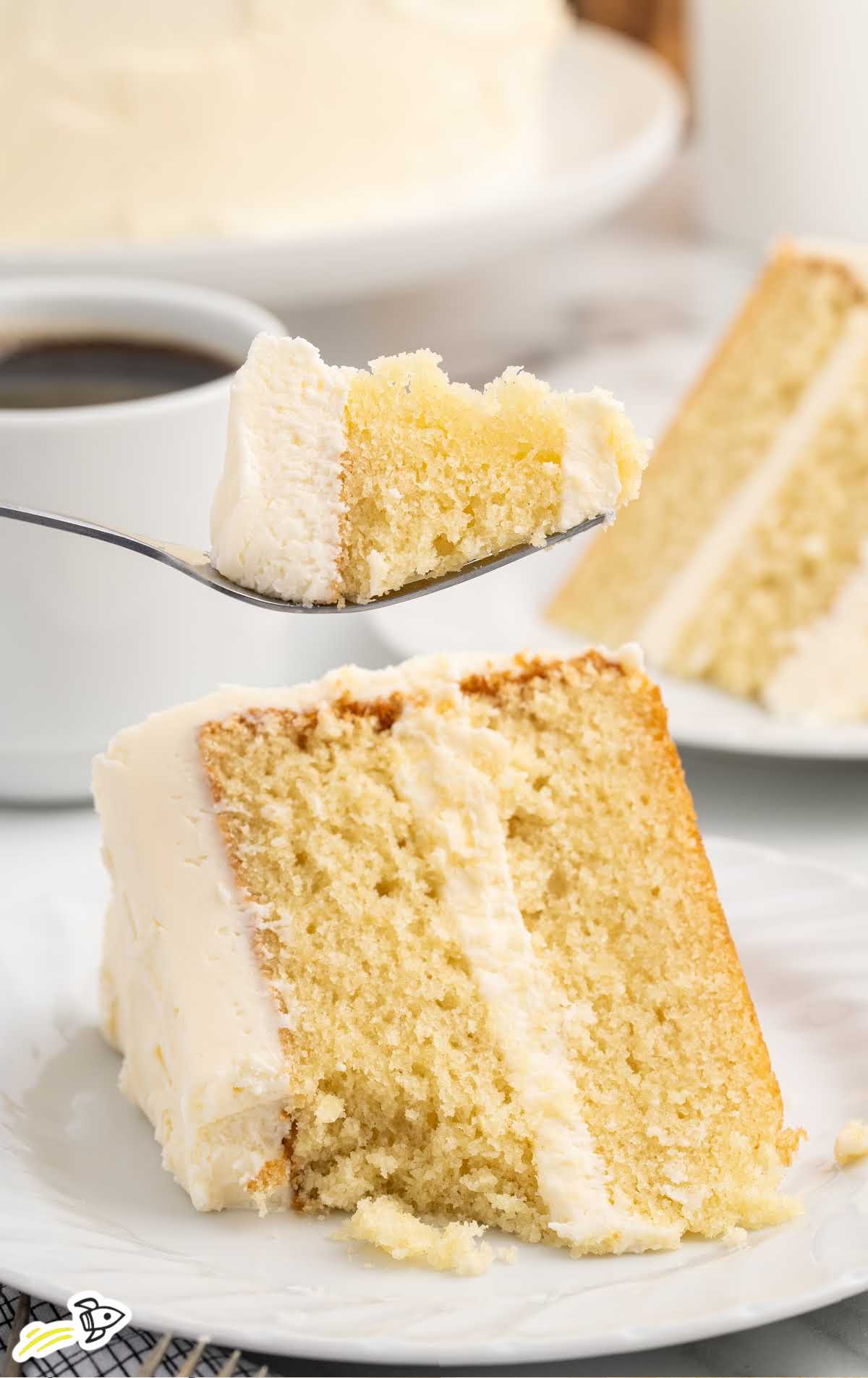
Our vanilla buttermilk cake has plenty of classic vanilla flavor and a complex tang that only buttermilk provides. Made with simple baking techniques and plenty of helpful advice from our team, you’re bound to bake up a cake that’s moist, tender, and utterly delicious.
New Recipes You’ll Love
- Pecan Pie Cheesecake Recipe
- Twinkie Cake
- 7 Minute Frosting
- Blueberry Cream Cheese Frosting
- Mint Chocolate Chip Milkshake
- Lemon Meringue Cupcakes
- Dog Ice Cream

Vanilla Buttermilk Cake
Ingredients
Cake
- 2¼ cups all-purpose flour
- 1 tablespoon baking powder
- ½ teaspoon salt
- ½ teaspoon baking soda
- 1 cup unsalted butter, softened
- 2 cups granulated sugar
- ¼ cup vegetable oil
- 1 tablespoon vanilla extract
- 3 large eggs, room temperature
- 1¼ cups buttermilk, room temperature
Frosting
- 1½ cups unsalted butter, softened
- 6 cups powdered sugar
- 2 teaspoons vanilla extract
- 3 tablespoons heavy cream, or whole milk
Instructions
- Preheat the oven to 350°F. Spray two 8-inch round cake pans with non-stick baking spray; line the bottoms with parchment paper and set aside.
- Combine flour, baking powder, salt, and baking soda in a bowl and set aside.
- In a separate bowl, cream together the butter and granulated sugar until pale and fluffy.
- Add the vegetable oil and vanilla extract and beat 1 minute longer until creamy.
- Beat in 1 egg at a time until the mixture is fluffy and fully combined.
- Rotate between adding the buttermilk and the flour mixture until the cake batter is combined.
- Divide the batter between the two prepared pans. Bake for 30 to 35 minutes, until a toothpick inserted in the cakes comes out with a few crumbs.
- Cool cakes on a cooling rack for 30 minutes, then carefully remove from the pan and cool completely.
- To prepare the frosting, beat the softened butter with a hand mixer or standing mixer until fluffy and lightened in color (about 2 minutes).
- Add in the powdered sugar, one cup at a time, mixing on low speed and gradually increasing to keep the powdered sugar in the bowl.
- Add in the vanilla extract and heavy cream and beat on high speed until light and fluffy (2 minutes).
- Place the first layer of cake on a plate or cake stand. Spread a layer of frosting about ½ inch thick over the cake (about 1 cup of frosting).
- Place the second layer of cake upside down on top of the first.
- Mound the remaining frosting on top of the cake and spread it across the top and down the sides, or decorate as you wish.
Notes
- Make sure your butter, eggs, and buttermilk are at room temperature so that they incorporate into the batter fully.
- You can also bake the cakes in 9-inch round pans. Just decrease the bake time by about 5 minutes.
- Oven temperatures vary and may need to be recalibrated periodically to ensure they are accurate. Make sure to check your cake at the lower end of the recommended baking time.
- Cooling the cakes fully ensures that your frosting won’t melt when you apply it.
Nutrition
Even More Recipes You’ll Love
Cake Recipes
- Lemon Cake
- Carrot Cake Roll
- Lemon Sour Cream Cake
- Coffee Cake in a Mug
- Texas Sheet Cake
- Icebox Cake (Chocolate)
- Crazy Cake
- Buster Bar Ice Cream Cake
- Raspberry Coffee Cake
- White Chocolate Blackberry Poke Cake
- Easy Vanilla Cake Recipe
- Million Dollar Cake
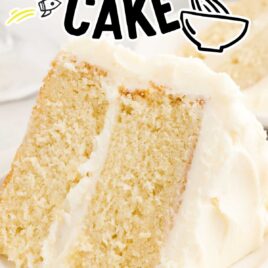
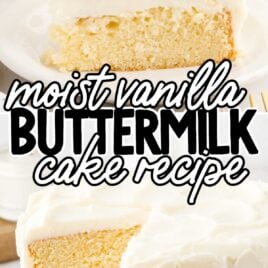

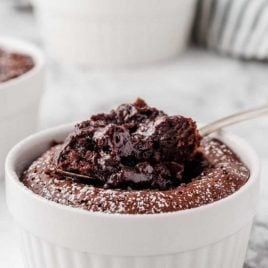








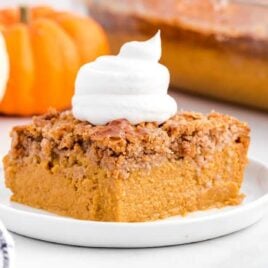
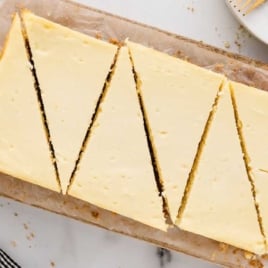
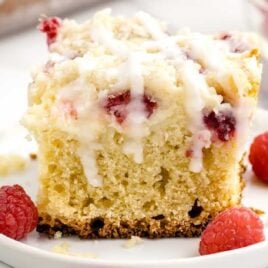
Comments
LaNeisha Sledge says
Very moist thanks so much❤️